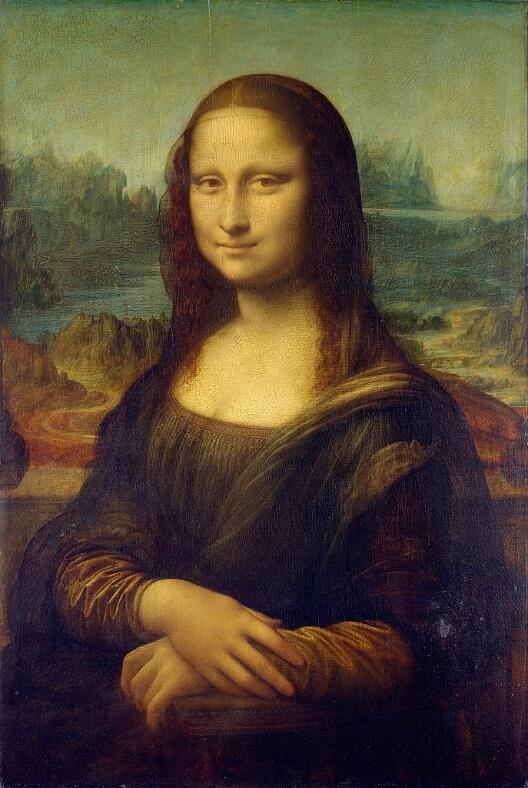Name of the painting: Mona Lisa
Name of the artist: Leonardo da Vinci
Dates created: 1504-1506

Mona Lisa Analysis: Essay Introduction
Mona Lisa is one of the most prominent and recognizable paintings in the world and is considered the greatest masterpiece of its author, Leonardo da Vinci. Created in 1503, the painting has been discussed for centuries by artists, academics, medics, and the general public (Mehra & Campbell, 2018). A vast amount of the painting’s interpretations already exist, and some are still being proposed nowadays. However, this paper mostly aims to explore the central theme, subject, and message of the Mona Lisa.
Mona Lisa Painting Analysis: Description
Da Vinci’s masterpiece was written during the Renaissance, and thus, was strongly influenced by the ideas of that period. The philosophy of the Renaissance placed a human in the center of the world; that is why portraits were so popular with Italian masters of the 15th and 16th centuries. Leonardo was among the first artists to capture a person sitting in front of the fictional landscape. Even though Mona Lisa is reminiscent of Madonna, it is still clear that the painter tried to depict an ordinary person. For creating this painting, Leonardo used a technique called “sfumato.” This term refers to the technique of oil painting that allows achieving a soft transition from one color to another. The great combination of the woman and the landscape in Mona Lisa is due to this technique (Da Vinci, n.d.). Therefore, this work by Leonardo may be considered not as a classical portrait, and this is what makes it unique among other paintings of a similar genre.
Mona Lisa has an outstanding impact on various types of Western art, but there were some things that shaped Leonardo’s work as well. As it was already mentioned, the Renaissance period had a strong effect on Leonardo’s works. The painter portrayed a real woman who was not consistent with medieval Christian philosophy. Leonardo is also famous for creating paintings on religious themes, but Mona Lisa does not depict another Madonna. The painting shows a typical woman of Leonardo’s age which confirms his commitment to the humanistic vision of the world. Therefore, it is impossible to omit the influence of this woman on Leonardo’s painting. Most critics and researchers agree that Mona Lisa portrays an Italian woman Lisa Gherardini. She was the wife of a rich merchant who ordered her portrait from Leonardo. This happened soon after Lisa gave birth to a child (Kemp & Pallanti, 2017). This might partly explain why Leonardo depicted the woman smiling.
I have always appreciated Mona Lisa by Leonardo da Vinci, but after careful examination, I discovered a new meaning in it. Being aware of the story behind the painting helps to understand it better and makes it more interesting to observe. When you know which person is portrayed in the painting, it is possible to enter his or her life for some time and experience the feelings that he or she had. It is also essential to consider the social and philosophical contest in which the painting was written. It might be hard to realize the significance of the Mona Lisa for the history of art if you do not know that it was one of the first portraits that depicted a real person. Undoubtedly, one can enjoy a painting even if one is not aware of its background. However, once you have become familiar with the painting’s story, you may start to value the piece of art even more.
Mona Lisa Analysis: Essay Conclusion
This paper did not attempt to discover or propose new interpretations of the Mona Lisa. I tried to focus on the main factors that influenced Leonardo’s masterpiece as well as study the most crucial features of the painting. Now that I have become aware of the fact that Leonardo was one of the first Renaissance masters to combine a regular person with the landscape, I can appreciate the painting not only from the artistic perspective but also from the historical.
References
Da Vinci, Leonardo. Mona Lisa.
Kemp, M., & Pallanti, G. (2017). Mona Lisa: The people and the painting. Oxford, UK: Oxford University Press.
Mehra, M. R., & Campbell, H.R. (2018). The Mona Lisa decrypted: Allure of an Imperfect Reality. Mayo Clinic Proceedings, 93(9), 1325-1327.